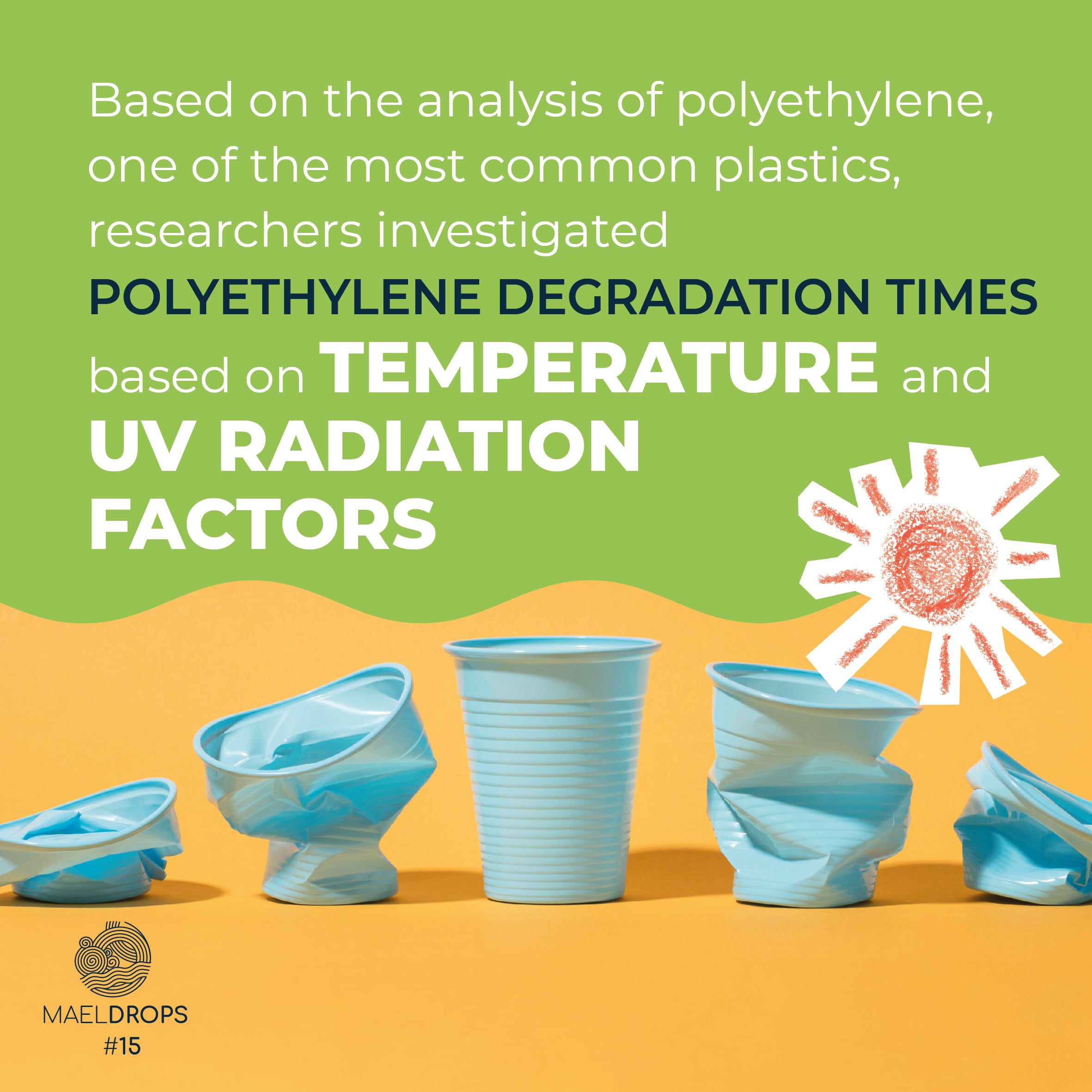MAELDrop #15 | How old are microplastics in the sea?

How old are the microplastic fragments lying in our oceans? Knowing this can help us understand their origins and improve numerical models, used to determine the behavior of plastics in the oceans. However, we still lack a method to accurately determine the age of microplastics.
A recent study proposes an interesting approach to estimate microplastics age. It is based on the analysis of polyethylene, one of the most common plastics (see our MAELDrop 5!), which degrades through environmental exposure. “This degradation level can be measured using the change in the material’s molecular weight and something called the carbonyl index. Simply, when polyethylene degrades its carbonyl index increases and molecular weight decreases,” says in a release the first author of the research, Rie Okubo.
Researchers conducted a series of experiments to understand how different combinations of temperature and UV radiation affected the degradation of polyethylene in order to standardize the degradation times. Once the degradation times were established, researchers conducted tests on microplastic samples collected from the sea, in the western North Pacific Ocean, finding that nearshore microplastics ranged from 0 to 5 years old, whereas offshore samples ranged from 1 to 3 years old.
Delving into the dynamics of plastics in the oceans is a key step in understanding how to reduce their presence and establish the most effective management policies. In the meantime, remember that we can all do our part daily by choosing products with as little plastic as possible and disposing of it properly so that it is directed to recycling!



